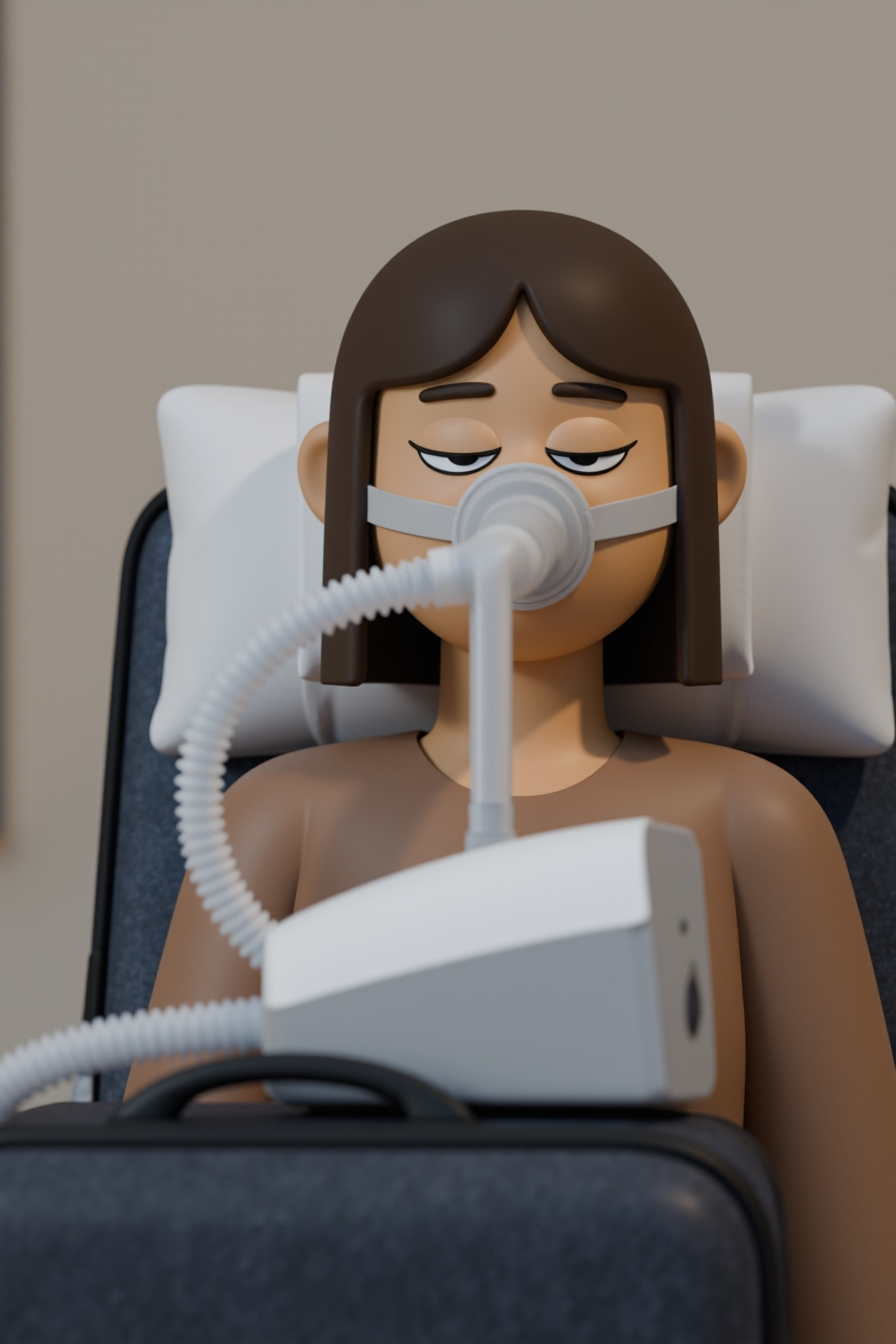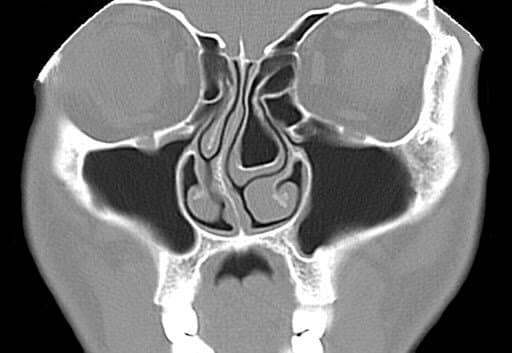Continuous Positive Airway Pressure (CPAP) therapy is a vital treatment option for individuals managing sleep apnea. By delivering a steady airflow during sleep, CPAP machines can help improve sleep quality, increase daily energy levels, and reduce risks associated with conditions like heart disease and stroke. However, some CPAP users experience uncomfortable side effects—especially nasal irritation or skin breakdown inside the nostrils—commonly referred to as CPAP sores. These irritations can cause discomfort, disrupt rest, and sometimes discourage consistent use, which may limit the therapy’s effectiveness.
If you are experiencing nasal discomfort or sore spots related to your CPAP mask, you are not alone. Understanding the causes and symptoms of these nasal issues—and following guidance from Ear, Nose, and Throat (ENT) experts on care and prevention—can help you manage and minimize complications. This comprehensive guide reviews the symptoms, underlying factors, treatments, and practical tips to support your nasal health and maintain comfortable, effective CPAP therapy.
What Are CPAP Sores in the Nostrils?
CPAP sores are localized areas of irritated, inflamed, or broken skin inside or around the nostrils. They often occur in users of nasal CPAP masks or nasal pillow masks. These sores may range from mild redness and tenderness to more painful, open wounds. If left unaddressed, such irritation can worsen and interfere with effective therapy.
Common symptoms reported include:
- Tenderness or burning sensation near the nose entrance
- Persistent redness or raw patches inside the nostrils
- Dry, cracked skin that flakes or develops scabs
- Occasional minor bleeding
- Nasal congestion or increased sneezing episodes[2]
Early Symptoms to Note
Recognizing early signs of nasal irritation can prevent progression and help maintain comfortable therapy. Look for:
- Repeated redness or rawness that persists after CPAP use
- Pain or soreness during and after wearing the mask, especially where it contacts the nose
- Dry or cracked nasal skin that does not improve with usual moisturizers
- Small bumps, blisters, or open sores on nasal skin
- Increased nasal symptoms such as congestion, runny nose, or sneezing[2]
Being proactive in identifying these symptoms supports timely intervention.
Causes of CPAP Sores in the Nostrils
Not all CPAP users develop nasal sores; factors contributing to their formation largely relate to the delicate nasal skin and how CPAP therapy affects it. Common contributing causes include:
- Dry air: Many CPAP machines deliver air that is drier than natural breathing environments unless equipped with a heated humidifier. Dry air can strip moisture from the nasal mucous membrane, which normally protects against irritation and infection. Without adequate moisture, the lining can crack, resulting in sores.
- Friction and pressure: An ill-fitting mask or nasal pillows that press too firmly or shift during sleep can cause repeated rubbing and pressure against sensitive nasal tissues. This friction can lead to redness, irritation, and eventually skin breakdown.
- Poor hygiene: Infrequent cleaning of masks can cause buildup of bacteria, oils, and other irritants on mask surfaces, exacerbating nasal skin issues or increasing infection risk.
The Importance of Humidity Control
Dry air is a major trigger for nasal soreness. According to a 2024 report by CPAP.com, adding humidification is a key preventive step[1]. Heated humidifiers, commonly available for CPAP machines, add moisture to the pressurized air, helping nasal mucosa maintain flexibility and natural defenses.
Many users find it helpful to start with moderate humidification settings and gradually adjust for comfort. Those with sensitive nasal skin may require higher levels, but it is important to consult your healthcare provider or sleep specialist to determine the best humidity setting. Over-humidifying can sometimes cause congestion or mask seal issues, so professional guidance is recommended.
Mask Fit and Friction Considerations
Just like wearing shoes, your CPAP mask should fit well to avoid unnecessary pressure or movement that can irritate skin. Masks that are too tight or too loose increase friction risks. Sometimes small adjustments—such as changing mask size, repositioning nasal pillows, or switching mask types—can significantly reduce irritation.
Visiting a certified mask fitting clinic or consulting with a sleep technologist can help optimize fit. As one ENT specialist advises, “sometimes a simple repositioning or mask change can make the difference between painful therapy and restful sleep.”
ENT-Recommended Treatments for CPAP Sores in Nostrils
ENT physicians frequently treat CPAP-related nasal irritation and offer practical strategies for healing and prevention.
Use of Heated Humidifiers
Incorporating a heated humidifier with your CPAP machine is often the first step toward relieving nasal dryness. ENT experts suggest beginning with moderate humidity and adjusting gradually based on nasal comfort. Using distilled or purified water in the humidifier is recommended to avoid mineral buildup and potential irritation.
Protective Topical Applications
To protect irritated nasal skin and promote healing, ENT specialists sometimes recommend gentle topical products. Always consult your healthcare provider before applying any products inside the nostrils, as certain ingredients may cause irritation or allergic reactions.
Commonly suggested options include:
- Lanolin-based creams: These soothe and protect chapped skin by forming a moisture barrier, especially effective when applied before bedtime.
- Petroleum jelly: A thin layer of unscented petroleum jelly can shield the skin during the day from environmental irritants. Avoid applying thick layers of petroleum jelly immediately before CPAP use, as it may interfere with mask sealing.
- Mild, fragrance-free diaper creams: Containing zinc oxide, these creams may provide skin-protective and healing benefits[3].
Always choose fragrance-free, non-medicated products unless otherwise directed by your healthcare provider.
Ensuring Proper Mask Fit and Hygiene
A well-fitted mask and diligent hygiene routine are critical. Many sleep centers offer mask fitting consultations or referrals. Daily cleaning with CPAP-approved wipes and weekly thorough washing help minimize bacterial buildup and skin irritation[1].
For persistent sores, healthcare providers may suggest switching mask types (nasal pillows, nasal masks, or full-face masks) to reduce skin contact. Any mask changes should be made in consultation with your healthcare team to maintain therapy effectiveness.
When to Consult an ENT or Healthcare Provider
Most CPAP-related nasal sores improve with home care, but professional evaluation is warranted if:
- Sores do not improve after one week of consistent home treatment
- Symptoms worsen or new issues such as pronounced redness, swelling, or pain develop
- Signs of infection occur, including warmth, pus, or tenderness around the affected area
- Nasal symptoms like congestion or sneezing persist despite care
ENT specialists can evaluate for infections, prescribe appropriate treatments if needed, and recommend alternative equipment or therapies tailored to your needs.
Lifestyle Tips to Support Nasal Skin Health During CPAP Use
To support nasal health and prevent sores, consider incorporating the following ENT-recommended habits:
- Stay hydrated: Drinking adequate water daily helps keep mucous membranes moist and resilient.
- Avoid irritants: Limit use of harsh facial cleansers, strong soaps, and decongestant nasal sprays that may dry or inflame nasal skin.
- Use nasal saline sprays: With your provider’s approval, gentle over-the-counter saline sprays can complement humidifier use by maintaining nasal lining moisture.
- Take breaks if needed: If nasal skin becomes sore, discuss with your doctor about occasional CPAP breaks to allow recovery without compromising overall therapy.
- Practice gentle cleaning: Clean your mask and accessories regularly using warm water and mild soap; harsh chemicals can damage the device and irritate your skin.
Frequently Asked Questions (FAQs)
Q1: Can CPAP-induced nasal sores heal without medical treatment?
A1: Mild sores often improve with increased humidification and gentle topical care. Persistent or worsening sores should be evaluated by an ENT or sleep specialist.
Q2: Will switching CPAP mask types help?
A2: Possibly. Changing to nasal pillows or full-face masks can reduce skin contact and friction. Always consult your healthcare provider before making such changes.
Q3: Are there creams I should avoid applying inside my nostrils?
A3: Yes. Avoid scented or medicated ointments unless prescribed, as they may aggravate sensitive nasal skin.
Q4: How often should I clean my CPAP mask?
A4: Daily wipe-downs and thorough weekly cleanings are recommended to minimize bacteria and skin irritants[1].
Conclusion
While CPAP sores in the nostrils can be a frustrating challenge, they need not compromise your therapy commitment. With appropriate humidification, proper mask fitting, attentive skin care, and professional guidance, most users can prevent or resolve nasal irritation and enjoy restful sleep. If symptoms persist or worsen, a consultation with an ENT specialist can provide targeted solutions to keep your CPAP journey comfortable and effective.
You deserve to breathe and sleep well every night. Don’t hesitate to seek qualified care when needed.
Book an Appointment
If you experience CPAP-related nasal irritation or other issues, consider scheduling an appointment with an ENT specialist. Expert assessment and tailored treatment can help resolve discomfort and support effective CPAP use. Visit Sleep & Sinus Centers to book your consultation today.
References
- CPAP.com. “Nose Sores from CPAP Mask.” June 2025. https://www.cpap.com/blogs/cpap-therapy/nose-sores-from-cpap-mask
- Enticare. “CPAP Runny Nose and Sneezing.” December 2024. https://enticare.com/2024/12/23/cpap-runny-nose-and-sneezing
- Nationwide Medical. “How to Deal with CPAP Mask Sores: Causes and Remedies.” April 2024. https://www.nationwidemedical.com/post/how-to-deal-with-cpap-mask-sores-causes-and-remedies
Disclaimer:
This article is for educational purposes only and is not medical advice. Please consult a qualified healthcare provider for diagnosis and treatment.
Don’t let allergies slow you down. Schedule a comprehensive ENT and allergy evaluation at Sleep and Sinus Centers of Georgia. We’re here to find your triggers and guide you toward lasting relief.





